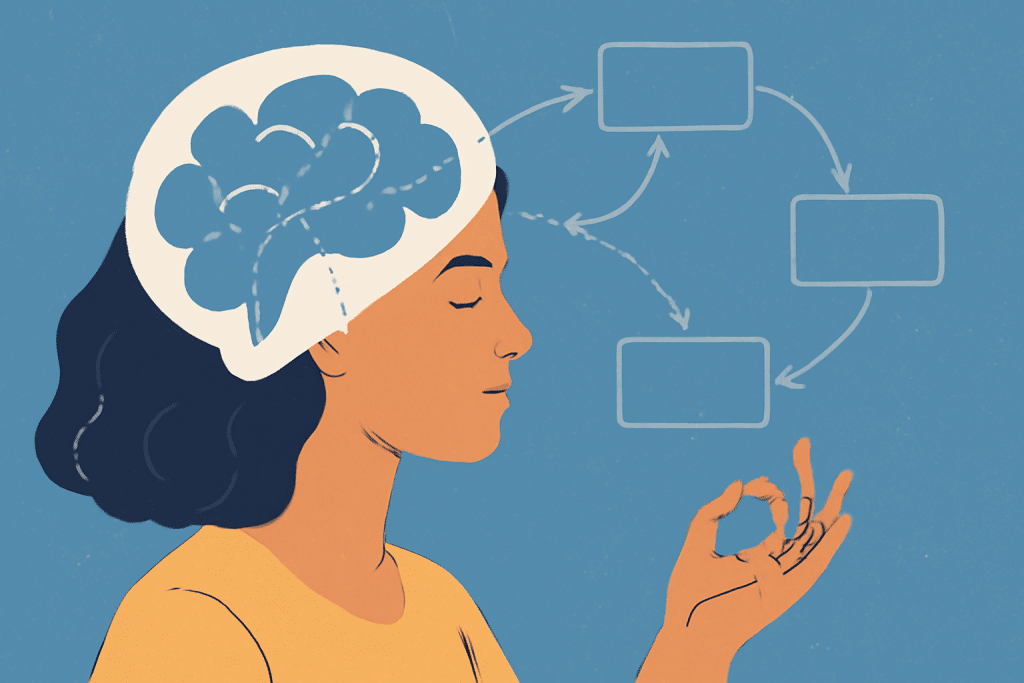What Thought Structures Help You Return?
Jessica White July 30, 2025
Life is filled with setbacks, challenges, and moments of doubt. Whether in personal development or career progression, we often find ourselves needing to “return” to a previous state of clarity, confidence, or insight. But how do we navigate those moments of stagnation or uncertainty? The answer lies in our thought structures.
Thought structures—ways of thinking, reflecting, and organizing ideas—play a significant role in how we process experiences and adjust our perspectives. When we can rely on the right cognitive frameworks, we can more easily return to a state of clarity or purpose. In this article, we’ll explore the emerging trends around thought structures, how they influence personal growth, and how you can implement practical strategies to foster adaptability, reflection, and resilience in your own life.

The Concept of Thought Structures: What Are They?
Before diving into the specifics of how thought structures help us return to clarity, it’s essential to understand what they are. Thought structures are the mental frameworks or cognitive patterns that shape how we process information, make decisions, and solve problems. These structures can be both conscious and unconscious, guiding us in every aspect of our lives, from the way we approach a task at work to how we interpret our emotions.
Some common examples of thought structures include:
- Schemas: These are mental representations that help us organize and interpret information based on our past experiences.
- Mental Models: These are frameworks for understanding how the world works, helping us make decisions and solve problems.
- Cognitive Biases: These are unconscious errors in thinking that affect our decision-making, often leading us to make irrational choices.
When our thought structures are adaptive and aligned with our goals, they help us navigate challenges more effectively. However, when they become rigid or outdated, they can hinder our progress.
Why Thought Structures Are Crucial for Returning to Clarity
When faced with difficulties, it’s common to feel lost or overwhelmed. During these moments, our ability to return to clarity depends largely on the thought structures we use. Here are a few reasons why having the right cognitive frameworks is essential for personal growth and adaptability:
1. Thought Structures Facilitate Reflection
One of the key ways we return to clarity is through self-reflection. Reflection allows us to step back from a situation, analyze our thoughts and feelings, and gain insight into how we can move forward. However, without the right thought structures in place, reflection can feel disorganized or unproductive.
By using reflective frameworks, such as journaling prompts, structured goal-setting, or meditation, we can better organize our thoughts and extract meaningful lessons from our experiences. Thought structures like growth mindset or cognitive reframing can help us view challenges as opportunities for growth, not as obstacles.
- Example: When facing a personal setback, a person with a growth mindset might reflect on the experience by asking, “What can I learn from this?” This structured thinking allows them to return to a positive and constructive outlook.
2. They Enable Problem-Solving
Thought structures help us organize complex information and break down problems into manageable steps. When we encounter a challenge or make a mistake, a well-developed mental model can guide us in how to approach the situation, assess possible solutions, and determine a course of action.
- Example: The OODA loop (Observe, Orient, Decide, Act), originally used in military strategy, is a framework that helps people analyze situations, make quick decisions, and adapt to changing conditions. This can be particularly helpful when you’re faced with a tough decision or are trying to get back on track after a failure.
3. They Foster Adaptability
In a rapidly changing world, the ability to adapt is crucial. Thought structures like mental flexibility allow us to approach problems with an open mind, consider different perspectives, and adjust our strategies as needed. When we face unexpected changes, these adaptive thought structures enable us to pivot and stay on course, even when things don’t go as planned.
- Example: During the pandemic, many businesses were forced to rethink their operations. Leaders who had a flexible mindset were able to adapt to remote work, e-commerce, and virtual events, allowing them to pivot successfully and continue to grow.
Key Thought Structures to Help You Return to Clarity
Here are some of the most effective thought structures that can help you return to clarity and regain momentum during challenging times:
1. Growth Mindset
A growth mindset, a concept popularized by psychologist Carol Dweck, refers to the belief that abilities and intelligence can be developed with effort and perseverance. When you approach challenges with a growth mindset, you view setbacks as opportunities for learning, rather than as personal failures.
- Action Tip: When you encounter a setback, ask yourself: “What can I learn from this?” Reframing your thinking in this way will help you return to a positive mindset.
2. Cognitive Reframing
Cognitive reframing involves changing the way you interpret a situation to view it from a more positive or constructive perspective. This thought structure is especially useful when dealing with stress or negative emotions. It allows you to reframe challenges, obstacles, and mistakes as opportunities to learn and grow.
- Example: Instead of thinking, “I failed at this task,” you could reframe it as, “I’ve gained valuable experience that will help me do better next time.”
3. The Pomodoro Technique
The Pomodoro Technique is a time-management method that uses intervals of focused work followed by short breaks. This approach helps reduce burnout and enhances productivity by structuring work into manageable chunks. It’s a great tool for returning to focus and clarity when you feel overwhelmed by tasks.
- Action Tip: Set a timer for 25 minutes of focused work, followed by a 5-minute break. Repeat this process and take longer breaks after every four intervals. This method helps you maintain focus while also allowing for recovery time.
4. Mindfulness and Meditation
Mindfulness and meditation are powerful practices for returning to mental clarity. These thought structures help you quiet the noise in your mind, focus on the present moment, and reduce stress. By practicing mindfulness, you can gain perspective on your thoughts and emotions, enabling you to respond more thoughtfully and with greater clarity.
- Example: Meditation apps like Headspace and Calm guide users through mindfulness exercises that promote relaxation and mental clarity.
Trends in Thought Structures and Their Impact on Personal Growth
As we continue to explore the ways in which thought structures can help us return to clarity, it’s important to note emerging trends in personal development and cognitive science that are influencing how we think about thinking. Here are some key trends:
1. The Rise of AI-Assisted Thinking Tools
With advancements in artificial intelligence, new tools are emerging that help individuals and businesses enhance their thinking processes. AI-assisted tools, like notion.ai or Otter.ai, allow users to organize thoughts, generate ideas, and structure their workflows more effectively. These tools provide valuable insights that can aid in problem-solving and creativity.
- Example: AI-powered tools can help you outline ideas, generate content, or summarize long documents—enabling you to streamline your thought processes and focus on the most important tasks.
2. Neuroscience-Based Approaches to Decision-Making
Recent research in neuroscience has shed light on how our brains make decisions and process information. Understanding how the brain works can help individuals develop more effective thought structures. Techniques like decision fatigue reduction and neuroplasticity exercises are gaining traction as tools to enhance cognitive performance.
- Example: By incorporating brain-boosting activities like puzzles, problem-solving exercises, and learning new skills, you can actively improve your brain’s ability to handle complexity and make clearer decisions.
Conclusion
The ability to return to clarity in the face of challenges is one of the most powerful tools for personal and professional growth. Thought structures such as growth mindset, cognitive reframing, and mindfulness are just a few of the frameworks that help us navigate the complexities of life with greater focus and adaptability.
By incorporating these thought structures into your daily routine, you can harness the power of reflection, learning, and adaptability, enabling you to return to clarity when you need it most. Whether you’re overcoming a personal setback, refining a creative project, or making a difficult decision, the right thought structures can help you stay on track and continue to grow.
Reference
- Reflective Practice & Self‑Reflection, https://en.wikipedia.org
- Cognitive Reframing / Restructuring, https://www.verywellmind.com/
- Structured Reflection & Thought Frameworks, https://thinkingmuseum.com







